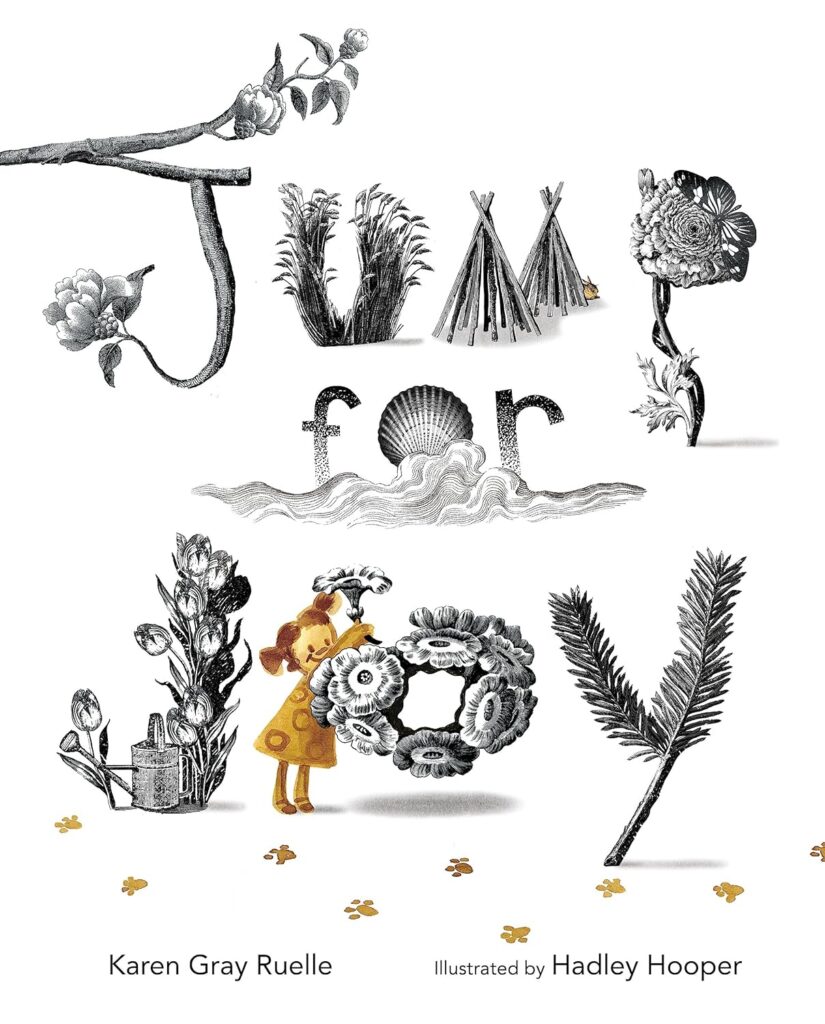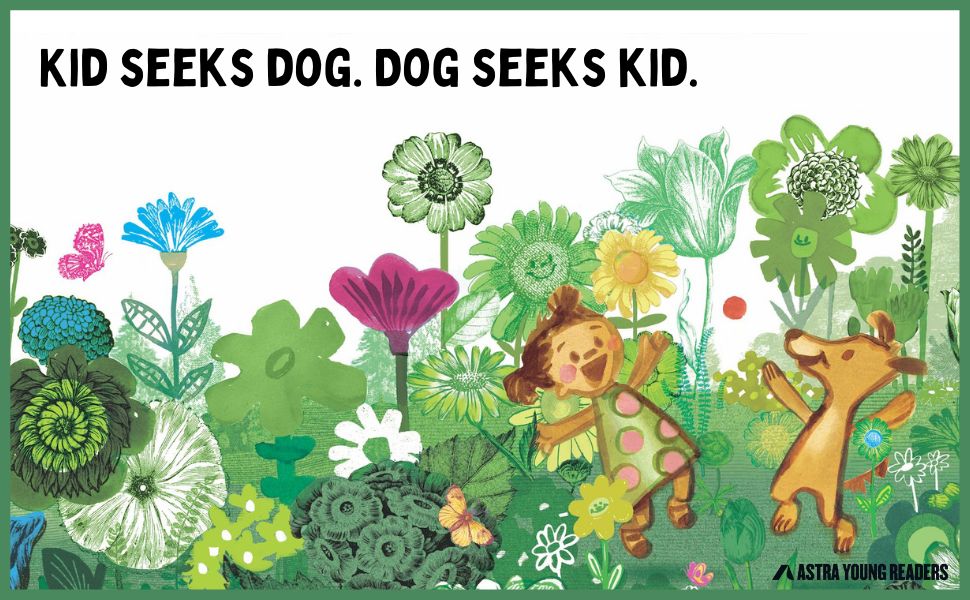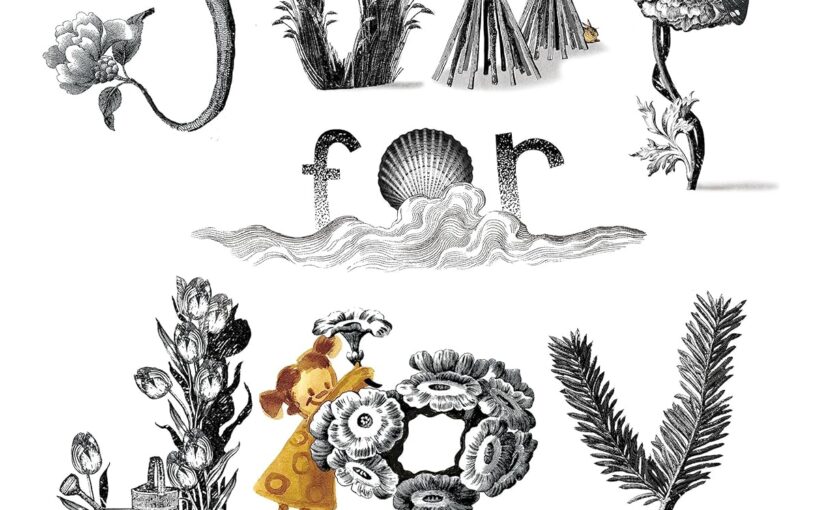Jump for Joy is an illustrated book that shows two sides of the same tail. It’s simultaneously very basic, has thought-provoking art, and allows young children to fill in the blanks so that they can make the story their own. It has the quality that Billy’s walkabout in the Family Circus does where you’re innately drawn to run your finger along the path that he’s intentionally, and aimlessly walking to avoid something. In Jump for Joy you’ll find yourself tracing your finger over Joy, as well as, the dogs, even though they’re a two-dimensional drawing on the pages. It could be an attempt for your subconscious to make the book last longer, but you’ll do it too and probably won’t be able to figure out why either.

Joy is a young girl who loves dogs. Jump is a dog who loves kids. They’ve both loved the other for as long as they can remember, but neither one has had one of the other in their life. Neither one cares what their girl or dog looks like, their size, shape, color, or pattern, but they’ll know them when they see them. They both do their best to work around the absence of the other. Joy makes a dog out of tulips. Jump makes a kid out of ferns. Joy makes a dog out of seashells, while Jump makes a kid out of sand. She calls him Shelly and he calls her Sandy, but the ocean’s waves destroy both of their creations.
After four seasons of having their substitutes knocked down by nature, the two wistfully walk away from each other, separated only by a skinny river. It’s this image that will reset expectations for those young audiences. Heretofore, the art has ebbed and flowed, with Joy being shown in a simpler, more crayon-like light while her creation was very detailed. The same goes with Jump, he’s shown in simple lines and his fern and other things are impossibly detailed. It’s a subtle juxtaposition that some young audiences will realize on their own and then thumb back and forth once they do.
The river scene is different. This is a two-page detailed illustration that shows both characters as the simpler versions of themselves. It shows the vastness of everything around them in comparison to how small they are when contrasted against the countryside.
When the second spring comes around the two, soon-to-be friends go outside and notice that their creations from last year have yielded a garden of tulips and ferns. They look over at one another, cry with joy, and bark with enthusiasm. As the two of them go off into the fields to play it’s a symphony of color that screams in contrast to the black and white pencils that illustrate the first 75% of Jump for Joy.
Jump for Joy is one of those illustrated books that offers the perfect combination of text length, style of art, brevity of words, and the speed at which you can read the book. It’s a great goodnight book that you can read once while taking your time, twice if you want to read it a bit quicker, or once and then give it to your audience so that they can trace their fingers along the pages. Those young ages will also want to spend time alone with the book so that they can look at the art.

They’ll notice the differences in the breeds of dogs. Children will see the kids in the clouds when Jump is dreaming about a kid of his own. They will see the slightly anthropomorphic trees that have legs as Jump wishes he had one.
The text is very concise and smartly written. It could’ve been longer, but that would’ve watered down its power. In its place is just enough to practice some sight words, allow for a story time book that kids will love and establish a perfect dance between the actual story and its inferences. Sometimes the best part of a story is what it doesn’t tell you, and Jump for Joy tells those young audiences just enough to where they know what’s going to happen without actively being told.
There may not be an immediate payoff. You will have to wait for great things to happen. Creativity is where you find it. A great friend is priceless. Knowing what you like is one of life’s best, and most underappreciated traits.
Jump for Joy is not a book about lessons or has an overt desire to teach young children anything. However, in simply telling a classic story with beautiful art, the lessons and organic conversation will easily trip out of your audience. Its total package makes Jump for Joy a new classic illustrated book that’s as at home and comfortable today as it will be in 50 years. The relatively simple and contrasting cover with its black and white, plus a happy yellow girl will make kids curious who will be promptly rewarded with the story within.
Jump for Joy is by Karen Gray Ruelle with illustrations by Hadley Hooper and is available on Astra Young Readers an imprint of Astra Books for Young Readers.
There are affiliate links in this post.





 Facebook
Facebook Twitter
Twitter Flickr
Flickr GooglePlus
GooglePlus Youtube
Youtube